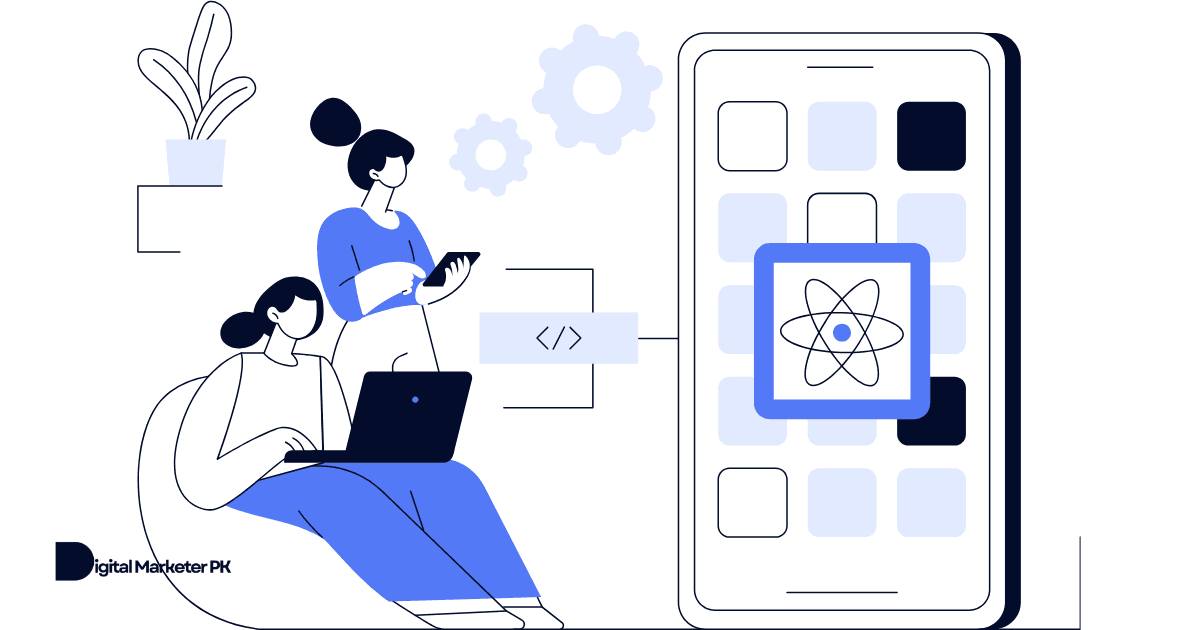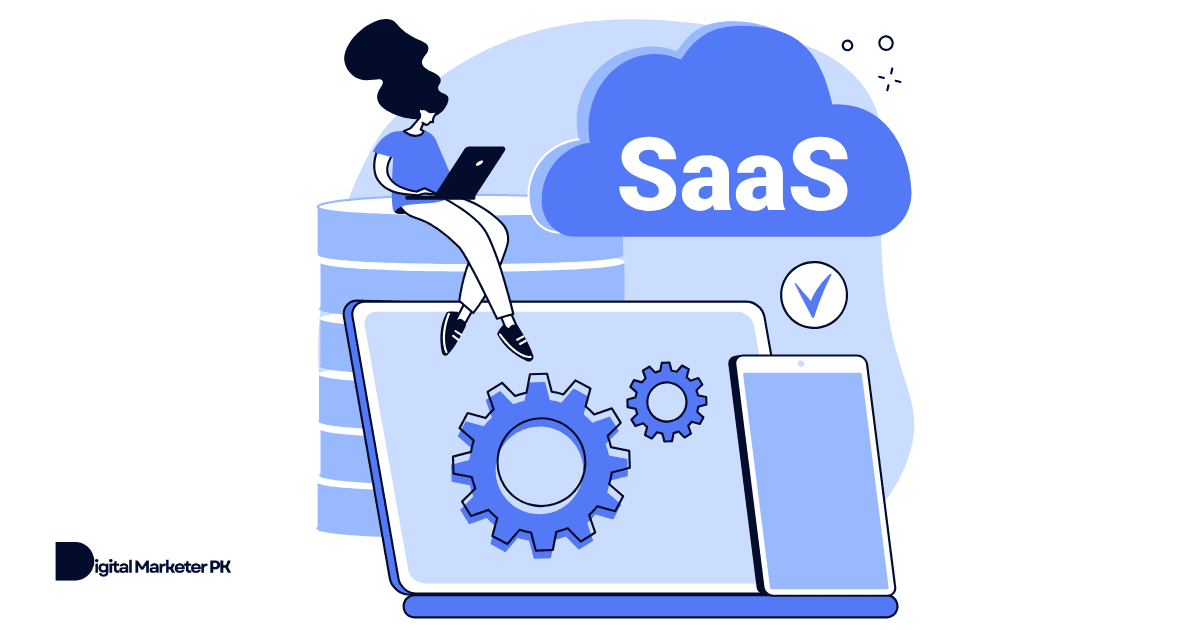Software as a Service (SaaS) companies use a different business model, pricing model, and marketing strategy. While traditional marketing techniques still work, you’ll need to understand a SaaS business model to create an effective marketing strategy.
Why is SaaS marketing different from conventional digital marketing and how can you promote a SaaS product and company effectively?
Let’s find out…
Understanding SaaS Business Model
Businesses that sell software, apps, and online tools use a dedicated business model that is suitable for their businesses. SaaS companies sell cloud-based software to their customers. There is no tangible product involved so these businesses rely on recurring payments.
SaaS business model relies on 3 pillars:
- Churn rate
- Customer acquisition cost
- Customer lifetime value.

You can argue that all businesses need to focus on these factors. Yes, they do. But SaaS companies rely heavily on these variables.
A SaaS business needs to retain its customers as the transactions are recurring. If it fails to retain customers, the recurring payments will reduce leading to an imbalance.
A high churn rate leads to a high customer acquisition cost (CAC) as you’ll need to spend more money on acquiring new customers. High CAC directly impacts customer lifetime value (CLV) and this creates an imbalance.
Maintaining a balance between the customer acquisition cost and customer lifetime value is critical for any SaaS company:

Customer lifetime value depends on two things:
- Average annual customer profit
- Average duration of customer retention.

The balance can be best maintained with recurring payments and customer retention.
And this is what makes the SaaS business model different from other businesses.
What is SaaS Marketing?
SaaS marketing is the practice of promoting subscription-based products of SaaS companies. Any marketing approach that is geared towards marketing a SaaS product or SaaS company is known as SaaS marketing.
Marketing software as a service product isn’t much different from marketing any other product or service. You’ll use the same techniques (mostly if not always) to market software. For example, you can use inbound marketing and social media ads to reach your target audience.
Since SaaS businesses rely on recurring pricing and mostly come with a free trial, you need a slightly different marketing approach. Not to mention, SaaS businesses use a different funnel that looks something like this:

You need to onboard customers and retain them to ensure you keep making a recurring profit. This requires you to use a different marketing approach for a SaaS product than you’d do for any other product.
SaaS products come with a free trial and this makes marketing different.
How Is SaaS Marketing Different?
If you have to promote a SaaS company and generate leads and sales for it, you’ll use the same marketing channels that you usually do for other businesses but the marketing approach will be different.
Why?
Because SaaS businesses offer free trials (most of them), they need to convert free trials to paid customers as quickly as possible, and they want to retain customers.
You need to capture the entire SaaS marketing funnel that includes onboarding and retention too. You can’t just generate leads for a SaaS company and think your work is done.
No.
Generating leads (free trial sign ups) is just the beginning. Free users don’t pay. For a SaaS company to make money, it must convert free users to paid customers.
And then it needs to retain them for life (or as long as possible).
So, SaaS marketing is focused on the following:
- Free trial sign ups
- Conversion of free trial users into paid customers
- Onboarding
- Engagement and retention.
Let’s dig a bit deep and see how these factors make SaaS marketing different:
1. Free Trial Sign Ups
SaaS companies use free trials and freemium models to generate leads and sales.
Why do SaaS businesses rely on free trials?
Because it is easier for SaaS companies to offer a free trial and let people use their software. It is just like test drives that automobile companies offer.
Of course, trials don’t work well in all the sectors.
Airlines can’t offer free rides to their ideal customers. It is hard for a soap manufacturing company to offer a free trial of its soap.
Since free trials work exceptionally well for the SaaS model, they don’t hesitate to offer it. And it has become a norm.
SaaS companies want to let their ideal customers try their software and see its value. Trials help users explore the software and decide if they want to stick or leave.
Types of SaaS Free Trials
SaaS businesses offer different types of trials:
- Free trial
- Freemium
A free trial is where you give full access to your software for a limited time. For example, BuzzStream offers 14 days free trial for all its plans:

You get full unrestricted access to all the features for 14 days. And if you don’t cancel your subscription, you’ll be billed after the completion of the free trial.
There are two types of free trials:
- Opt-in free trials: These are the free trials where users don’t have to add their credit card details. This type of free trial starts with a simple sign up. The user needs to opt-in to the subscription by adding credit card details after the completion of the free trial.
- Opt-out free trials: These trials require users to add their credit card details to start their free trial. The user needs to opt-out before the trial ends to avoid payment (if not interested). Users can’t get access to the trial without adding a valid payment method.
Freemium model, on the other hand, is where you give restricted access to the software for an unlimited duration. The free for life plan is an example of the freemium model. Evernote uses a freemium model where it lets you use it free of cost for life but with limited access to its features:

Free trials make SaaS marketing easier.
It is easy to convince someone to sign up for a free trial especially if it is opt-in or freemium. The user doesn’t lose anything. It is a simple sign up and they get access to the software.
So, this makes SaaS marketing different because you’ll be persuading ideal customers to sign up for a free trial.
2. Free Trial to Paid Conversion
Marketing SaaS free trials is easy but converting free trials into paid customers is the hard part. Free trial to paid conversion rate is what matters.
If you are doing an exceptional job of generating free trials but you can’t convert free users into paid subscribers, things won’t work.
Free trial to paid conversion or simply free trial conversion rate refers to the percentage of users that convert to paid subscriptions from free trials.
And this is where SaaS marketing starts getting interesting.
You just don’t have to create the SaaS marketing strategy for the top of the funnel (to acquire new free trial sign ups) but you need to focus more on the free trial conversion rate.
For opt-in free trials, a decent conversion rate is in the range of 25% and for opt-out free trials, it must be around 60%.
Achieving such a high conversion rate requires a lot of marketing efforts that is the sole responsibility of the SaaS marketers.
3. User Onboarding
Onboarding is the process of helping users understand how your software works so they can get value from it. The idea is to guide new users to achieve success with your app so they stick and don’t leave.
Research shows that user engagement increases exponentially once new app users achieve first success with your app:

First success means achieving something of value from your software. Evernote, for example, has a great onboarding process that doesn’t just tell new sign ups how to use the app but it tells them key features in 5 simple steps:

Each step helps users complete one tiny task such as creating a note. This is what’s known as the first success. And it helps a SaaS company retain free trial users.
The onboarding process plays a significant role in converting free trials into paid customers:

It guides them, sets expectations, helps them achieve first success, and shows them how to drive value from the software. Setting the right expectations about your software is critical because a lot of people stop using software and apps because they don’t find it as useful as they thought:

You can address most of these issues via your onboarding process such as setting the right expectations, describing your tool, helping users understand how to use it, making navigation easier, and more.
The fact that SaaS companies rely heavily on their onboarding process for engagement and a free trial to paid conversions makes SaaS marketing quite different. In the absence of an effective user onboarding process, your marketing efforts won’t deliver noticeable results.
A great onboarding process can simplify marketing by helping your marketing team boost conversions and engagement.
4. Engagement and Retention
Customer retention and engagement are important for SaaS business survival. They just have a single product (software) so a customer lost is lost for life.
There is minimal room for bringing back churn customers as they have already tried your software and they left. You don’t have a huge list of products (like ecommerce stores) so your options are zero when it comes to product variation.
SaaS businesses don’t get a second chance.
This is where marketing gets challenging. If the target audience is extremely focused, it gets challenging for SaaS marketers to bring back churned customers. The average churn rate is around 5% for SaaS and if you have a churn rate under 3%, you are doing a great job:

The best way to reduce voluntary churn is via user engagement. If users are driving value from your software, they’re least likely to leave.
Engaging customers in the first place is the key to success. And engagement starts from the onboarding process and continues forever. Sending emails, notifications, and staying in contact with your users are some of the key techniques marketers use to retain software users.
Of course, this makes SaaS marketing different yet challenging as
SaaS Marketing is Both Different and Same
Yes, it is both similar and different at the same time.
The marketing channels and networks you use to promote a SaaS product are similar. Think of SEO, content marketing, PPC, email marketing, referral programs, social media marketing, etc. You’ll use one or more of these existing channels to market a SaaS company and its software.
The difference lies in how you use these channels. Your marketing strategy and techniques will be different. For example, the content you’ll create to target the bottom of the funnel will be more geared towards software guides and how to use your app. Similarly, you’ll need to create an epic email marketing series to boost the free trial conversion rate.
However, most of the SaaS marketing techniques and strategies aren’t just different from what you’ll use in any other industry.
It all comes down to what SaaS marketing strategy you are using to promote your app. The more focused and SaaS-oriented it is, the better.





